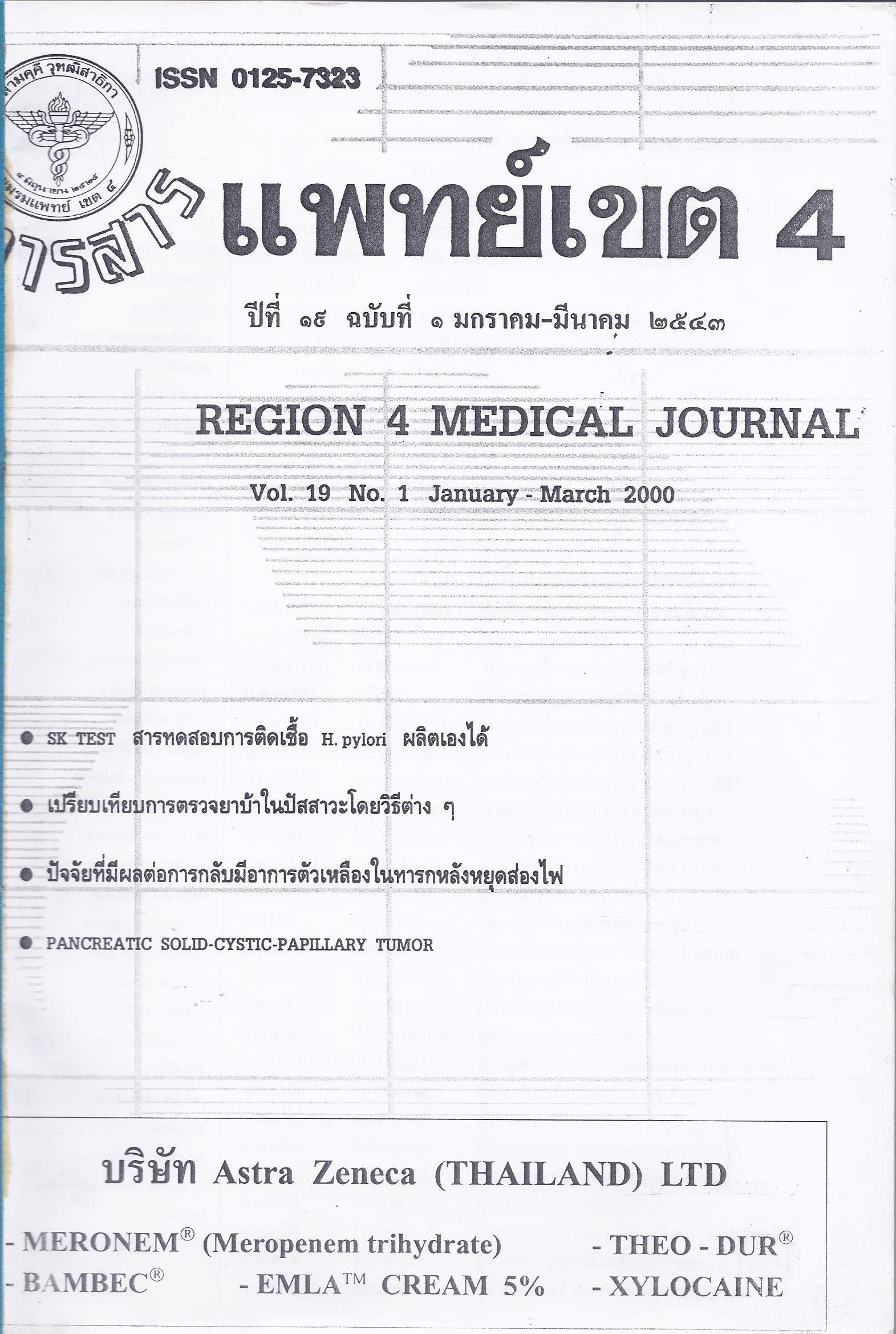ปัจจัยที่มีผลต่อการกลับมีอาการตัวเหลืองในทารกแรกเกิดหลังหยุดการรักษาโดยการส่องไฟ
บทคัดย่อ
A retrospective study was performed in 258 hyperbilirubinemia newborns receiving phototherapy at the Makaruk General Hospital during 1997-1999. Compared to total serum bilirubin (TSB) levels at the time of discontinuing of phototherapy, TSB levels at up to 24 hours after completion of phototherapy (rebound TSB) were significantly higher in four major categories, namely, low birth weight (LBW, < 2500 gm, P < 0.001), hemolytic disease due to ABO blood group incompatibility (p = 0.04), Glucose-6-phosphate dehydrogenase (G6PD) deficiency (p = 0.008) and other newborn complications (p = 0.001).
It was additionally found that, among three different weight groups, approximately 24 hours after discontinuing phototherapy, TSB levels in healthy infants weighing > 2,500 gm with no risk of hemolytic disease were significantly reduced (p = 0.001). In contrast, those infants weighing >2,500 gm with risk of hemolytic disease were insignificantly reduced (p=0.063).
Conclusively, it may be unnecessary to perform a repeated investigate for TSB level after a complete phototherapy in healthy infants (full term, BW > 2,500 gm with no risk of hemolytic disease), but highly recommended in those having either LBW, a risk of hemolytic disease or newborn complications.
ดาวน์โหลด
เผยแพร่แล้ว
รูปแบบการอ้างอิง
ฉบับ
ประเภทบทความ
สัญญาอนุญาต
ลิขสิทธิ์บทความเป็นของผู้เขียนบทความ แต่หากผลงานของท่านได้รับการพิจารณาตีพิมพ์ลงวารสารแพทย์เขต 4-5 จะคงไว้ซึ่งสิทธิ์ในการตีพิมพ์ครั้งแรกด้วยเหตุที่บทความจะปรากฎในวารสารที่เข้าถึงได้ จึงอนุญาตให้นำบทความในวารสารไปใช้ประโยชน์ได้ในเชิงวิชาการโดยจำเป็นต้องมีการอ้างอิงถึงชื่อวารสารอย่างถูกต้อง แต่ไม่อนุญาตให้นำไปใช้ในเชิงพาณิชย์




